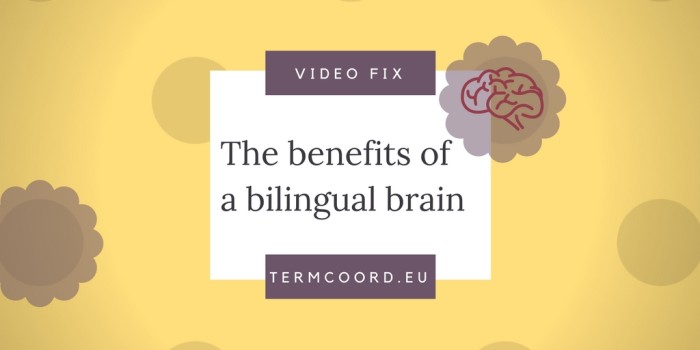Do you consider yourself a balanced bilingual? And do you know the difference between a compound bilingual, a coordinate bilingual and a subordinate bilingual? Whatever the answer is, we are proposing you to check the following video on “The benefits of a bilingual brain” and find out!
Mia Nacamulli spoke in TED-ed about the three types of bilingual brains and about how knowing more than one language keeps your brain healthy, complex and actively engaged. She also presented the Critical Period Hypothesis that according to it “children learn languages more easily because the plasticity of their developing brains lets them use both hemispheres in language acquisition, while in most adults, language is lateralised to one hemisphere, usually the left.” As a result, a child’s linguistic repertoires could be more advanced than of any adult’s and family can have a catalytic effect during its creation. Thus, the existence of a well-thought strategy is of great importance. For further information on family language planning we invite you to read more in our article Family language planning and active bilingualism.

Multiple language learning takes care of your mental health too, according to this presentation, with major cognitive benefits, fact that comes in contrast with the 16th century’s belief which considered bilingualism a handicap! In 2017 be proud of your multi-brain and keep learning! 😉
Written by: Katerina Palamioti, Translator, Social Media and Content Manager, Communication Trainee and Foodie at the Terminology Coordination Unit of the European Parliament.
Sources:
- Karavasili, K. (2017). Family language planning and active bilingualism. Terminology Coordination Unit. Available at: http://bit.ly/2miSuB1 (Accessed 8 Mar. 2017).
- Nacamulli, M. (2017). The benefits of a bilingual brain. TED-Ed. Available at: http://bit.ly/2mBinhI (Accessed 8 Mar. 2017).
